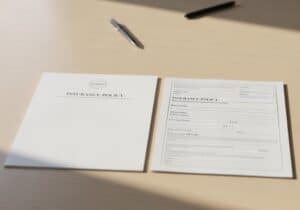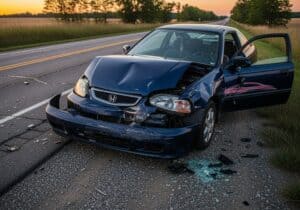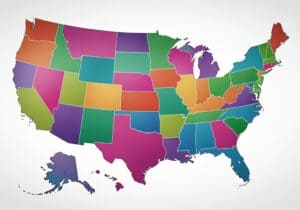Defining Uninsured vs. Underinsured Motorist Coverage
When discussing auto insurance, the terms “uninsured motorist” (UM) and “underinsured motorist” (UIM) often come up together, but they address distinct scenarios. Both are designed to protect you when the at-fault driver lacks adequate insurance, but understanding the difference is crucial for comprehensive coverage.

At its core, uninsured motorist coverage steps in when the driver responsible for an accident has no auto insurance whatsoever. This is a common and dangerous reality on our roads, as we’ve seen from the statistics. Underinsured motorist coverage, on the other hand, applies when the at-fault driver has insurance, but their policy limits aren’t high enough to cover the full extent of your damages, such as medical bills or vehicle repairs. For a more in-depth look at these distinctions, you can explore resources that clarify uninsured versus underinsured motorist coverage.
What is Uninsured Motorist (UM) Coverage?
Uninsured Motorist (UM) coverage is a vital component of your auto insurance policy designed to protect you and your passengers. It typically comes in two main forms:
- Uninsured Motorist Bodily Injury (UMBI): This part of your UM coverage pays for medical expenses, lost wages due to injury, pain and suffering, and in some cases, even funeral costs for you and your passengers if you’re involved in an accident with an uninsured driver. It essentially acts as if the uninsured driver had liability insurance, covering your personal losses.
- Uninsured Motorist Property Damage (UMPD): This covers the costs of repairing or replacing your vehicle if it’s damaged by an uninsured driver. It can also cover damage to other property, like your fence or mailbox, depending on your state and policy.
The primary goal of UM coverage is to prevent you from bearing the financial burden when an irresponsible driver causes harm but has no means to pay for it.
What is Underinsured Motorist (UIM) Coverage?
Underinsured Motorist (UIM) coverage addresses a different, yet equally critical, coverage gap. Imagine you’re in an accident, and the at-fault driver has the state minimum liability insurance, say $25,000 for bodily injury. If your medical bills and lost wages amount to $75,000, that driver’s policy would only pay $25,000, leaving you with a $50,000 shortfall.
This is where UIM coverage “tops up” the amount. Your UIM policy would kick in to cover the difference, up to your policy limits. This is especially important in cases involving serious injuries or high-value damages, where the costs can quickly exceed typical minimum liability limits. Many responsible drivers carry UIM coverage to ensure they are fully protected, even when the other driver technically has insurance but not enough to cover the true cost of an accident.
What Your Policy Covers and Excludes
Understanding the specifics of what your UM/UIM policy includes and excludes is paramount. While the primary function is to cover you when the at-fault driver can’t, the exact benefits can vary.
Bodily Injury vs. Property Damage
As we’ve touched upon, UM/UIM coverage typically separates into bodily injury and property damage components.
- Bodily Injury (UMBI/UIMBI): This is often the most critical aspect, covering:
- Medical expenses: Hospital stays, doctor visits, rehabilitation, prescription medications.
- Lost wages: Income you lose because you’re unable to work due to your injuries.
- Pain and suffering: Compensation for the physical discomfort and emotional distress caused by the accident.
- Funeral costs: In the tragic event of a fatality.
- Property Damage (UMPD/UIMPD): This covers the cost of repairing or replacing your vehicle. However, understand how UMPD differs from your standard collision coverage.
Feature Uninsured Motorist Property Damage (UMPD) Collision Coverage Purpose Pays for damage to your vehicle caused by an uninsured or hit-and-run driver. Pays for damage to your vehicle from a collision, regardless of fault. At-Fault Driver Uninsured or unidentified (hit-and-run). Any driver, or single-vehicle accident. Deductible Often has a deductible, which may be lower than collision. Almost always has a deductible. Availability Not available in all states; sometimes optional. Widely available and often required by lenders. Hit-and-Run Coverage Often covers hit-and-run incidents (check state laws/policy). Typically covers hit-and-run incidents. Other Property May cover damage to other personal property (e.g., fence, mailbox). Primarily covers your vehicle. While collision coverage will cover damage to your vehicle regardless of who is at fault, UMPD specifically protects you from the financial fallout when an uninsured driver causes the damage. In some states, UMPD might not even be available, making collision coverage your only option for property damage in such scenarios.
Special Cases: Hit-and-Run Accidents
One of the most frustrating and frightening scenarios is being involved in a hit-and-run accident. This occurs when a driver causes an accident and flees the scene without providing their information. In these situations, your UM coverage often becomes your primary recourse.

Because the at-fault driver is “unidentified,” they are essentially treated as an uninsured motorist. Your UMBI coverage can cover your medical expenses and other injury-related costs, while UMPD (if you have it and it’s applicable in your state) can cover your vehicle repairs.
However, specific rules apply. You’ll almost always need to file a police report promptly after the incident. Many policies require this within a certain timeframe (e.g., 24-72 hours) for hit-and-run claims to be valid. Gathering any witness statements or physical evidence (like paint transfers or surveillance footage) can also be crucial. For more information on what steps to take if an uninsured driver hits you, including hit-and-runs, consider reviewing a guide on what happens if an uninsured driver hits you.
State Requirements and Why Coverage is Crucial
The necessity of uninsured motorist coverage isn’t just about personal prudence; it’s often a matter of state law. While auto insurance requirements vary significantly across the United States, many states recognize the widespread problem of uninsured drivers and mandate UM/UIM coverage.
States where UM/UIM coverage is typically required or offered with mandatory rejection:
- Connecticut
- Illinois
- Kansas
- Maine
- Maryland
- Massachusetts
- Minnesota
- Missouri
- Nebraska
- New Hampshire (if you buy insurance, you must include UM)
- New York
- North Carolina
- North Dakota
- Oregon
- South Carolina
- South Dakota
- Vermont
- Virginia (can opt out by paying a fee)
- West Virginia
- Wisconsin
- Washington, D.C.
In other states, UM/UIM coverage is optional, meaning you can choose to purchase it or waive it. However, even if it’s not legally required, waiving this coverage can expose you to significant financial risk.
The reason for this risk is simple: the prevalence of uninsured drivers. According to 2022 data from the Insurance Information Institute, an estimated 14% of drivers nationwide are uninsured. This means approximately one in eight drivers you encounter on the road may not have coverage. The percentages vary greatly by state, with some regions facing much higher rates. For instance, Washington, D.C. has the highest rate of uninsured motorists at 25.2%, followed by New Mexico at 24.9% and Mississippi at 22.2%. In contrast, states like Wyoming (5.09%), Maine (6.2%), and Idaho (6.2%) have some of the lowest rates.
The Sunshine State, Florida, unfortunately, has some of the highest rates of uninsured motorists in the United States, with some estimates putting it around 24%. This makes understanding your options for Florida uninsured motorist coverage particularly important for residents.
Do I Need Uninsured Motorist Coverage if it’s Optional?
Given the statistics, even if your state doesn’t mandate UM/UIM coverage, the answer for most drivers is a resounding yes. Here’s why:
- High Risk of Encountering Uninsured Drivers: As noted, a significant portion of drivers on the road lack insurance. While you can drive defensively, you can’t control the actions of others.
- Protection for Your Assets: Without UM/UIM, if an uninsured driver causes a serious accident that results in substantial medical bills or property damage, you could be left to pay those costs out of your own pocket. This could mean draining savings, taking on debt, or even facing bankruptcy.
- Peace of Mind: Knowing you’re protected against the financial consequences of another driver’s negligence offers invaluable peace of mind every time you get behind the wheel.
- Hit-and-Run Protection: As discussed, UM coverage often extends to hit-and-run incidents, providing a safety net when the at-fault driver cannot be identified.

While it’s an additional cost, the premium for UM/UIM coverage is typically very affordable, often only a small percentage of your overall auto insurance premium. Considering the potential financial devastation an accident with an uninsured driver can cause, it’s a small price to pay for substantial protection.
How Much Coverage Do You Need?
Determining the right amount of uninsured motorist coverage requires a thoughtful assessment of your financial situation, assets, and potential risks. While there’s no one-size-fits-all answer, several guidelines can help you make an informed decision.

How to Determine the Right Amount of Uninsured Motorist Coverage
Many experts recommend that your UM/UIM bodily injury limits should match your liability coverage limits. For example, if you carry liability limits of $100,000 per person and $300,000 per accident, you should consider similar limits for your UMBI/UIMBI. This ensures that you and your passengers have the same level of protection as you would offer to others if you were at fault. This approach helps safeguard your personal assets, as serious injuries can quickly lead to medical bills and lost wages far exceeding minimum coverage amounts.
For property damage (UMPD/UIMPD), if you don’t have collision coverage, you should select a limit that closely mirrors the value of your vehicle. If you do have collision coverage, UMPD might still be beneficial for its lower deductible or specific coverage for hit-and-run incidents where collision might not apply the same way.
Another important concept is stacking coverage. In some states, and with certain policies, you can “stack” your UM/UIM limits. This means if you have multiple vehicles on a single policy, or multiple policies, you can combine the coverage limits for each vehicle to create a higher overall limit for a single accident. For instance, if you have a $100,000 UM policy on two cars, stacking could potentially give you $200,000 in coverage for one accident. It’s crucial to check with your insurance provider to see if stacking is available in your state and how it applies to your specific policy.
A thorough policy review with a knowledgeable insurance agent is the best way to tailor your UM/UIM coverage to your unique needs. They can help you assess your assets, income, and lifestyle to recommend appropriate limits.
Does Uninsured Motorist Coverage Replace Health Insurance?
This is a common question, and the answer is generally no, but it provides crucial complementary protection. While your health insurance will cover your medical bills after an accident, UMBI offers several distinct advantages:
- Deductibles and Coinsurance: Health insurance plans often come with high deductibles and significant coinsurance amounts that you’d have to pay out-of-pocket before your health insurance fully kicks in. UMBI, especially for bodily injury, often has no deductible or a much lower one, covering these initial costs.
- Coverage for Passengers: Your health insurance only covers you. UMBI covers you and your passengers, regardless of their own health insurance status. This is vital if you frequently drive with friends or family.
- Lost Wages: Health insurance typically does not cover lost income due to an accident. UMBI can compensate you for wages lost because your injuries prevent you from working.
- Pain and Suffering: Health insurance covers medical treatment, but it does not provide compensation for non-economic damages like pain, suffering, and emotional distress. UMBI can provide this type of compensation, which can be significant in severe injury cases.
- PIP Interaction: In no-fault states like Florida, your Personal Injury Protection (PIP) coverage pays for initial medical expenses regardless of fault. However, PIP limits (e.g., $10,000 in Florida) can be quickly exhausted in serious accidents. Once your PIP is used up, UMBI can then provide additional coverage for your medical bills and other damages. Understanding how PIP works in Florida and the state’s no-fault insurance system is key to appreciating the role of UMBI.
Therefore, while health insurance is essential, UMBI acts as a critical safety net, filling gaps that health insurance doesn’t cover and protecting you from the financial strain of an accident caused by an uninsured driver.
Frequently Asked Questions about UM/UIM
We’ve covered the basics of UM/UIM, but many practical questions arise when considering or utilizing this coverage.
How do I file a claim for uninsured motorist coverage?
Filing a UM/UIM claim is similar to filing any other auto insurance claim, but with specific considerations due to the uninsured nature of the other party. Here are the general steps:
- Ensure Safety and Call Police: Immediately after the accident, ensure everyone’s safety. If there are injuries or significant damage, call the police to file an official report. This report is crucial as it documents the accident and, importantly, the other driver’s lack of insurance or identification (in a hit-and-run).
- Gather Information: Collect as much information as possible from the scene: photos of vehicles and the accident scene, witness contact information, and any details about the uninsured driver (even if they flee, note vehicle type, color, partial plate, etc.).
- Contact Your Insurer: Notify your own insurance company as soon as possible after the accident. Explain that the other driver was uninsured or fled the scene. They will guide you through their specific claims process.
- Provide Documentation: Your insurer will likely request various documents, including the police report number, medical records and bills (for UMBI), and vehicle damage estimates (for UMPD).
- Follow-Up: Stay in regular communication with your insurance adjuster. Be prepared to provide additional information as requested.
For detailed steps on what to do after a car accident, especially in Florida, a comprehensive guide can be incredibly helpful.
Does a UM/UIM claim make my rates go up?
This is a common concern, and the answer can be nuanced. Generally, if you are not at fault for an accident, your insurance rates should not increase solely because you filed a UM/UIM claim. Most states have laws or regulations that prevent insurers from raising premiums for not-at-fault accidents.
However, insurance policies and state laws vary. While the claim itself might not directly cause an increase, your overall claim history can sometimes influence future rates or eligibility for discounts. If you have multiple claims, even if not at fault, an insurer might view you as a higher risk. Always check your specific policy terms and consult with your insurance agent for clarification.
What happens if the at-fault driver is found after a hit-and-run claim?
If you’ve filed a UM/UIM claim for a hit-and-run accident, and later the at-fault driver is identified and found to have insurance, a process called subrogation typically occurs.
In subrogation, your insurance company, having already paid out your claim, will then seek reimbursement from the at-fault driver’s insurance company. Essentially, your insurer steps into your shoes to recover the money they paid you. This means your claim might be adjusted, or your insurer might recover their losses, potentially impacting your future rates less than if they had no recourse. It reinforces the importance of reporting hit-and-run incidents to the police, as identifying the driver provides a path for your insurer to recover costs.
Conclusion
Uninsured and underinsured motorist coverage is far more than just another line item on your auto insurance policy; it’s a critical financial safety net in an unpredictable world. With a significant percentage of drivers on the road lacking adequate insurance, protecting yourself and your loved ones from their negligence is not just smart—it’s essential.
UM/UIM coverage ensures that you are not left to bear the burden of medical bills, lost wages, and vehicle repairs when an accident is caused by someone who cannot or will not pay. It provides peace of mind, knowing that even in the worst-case scenarios, your financial future is safeguarded.
We strongly encourage you to review your current auto insurance policy. Understand your UM/UIM limits, consider if they adequately protect your assets, and discuss any questions with your insurance provider. Don’t wait until it’s too late to find you’re unprotected. For more information on navigating insurance complexities and protecting your rights after an accident, explore our comprehensive resources on uninsured motorist protection.